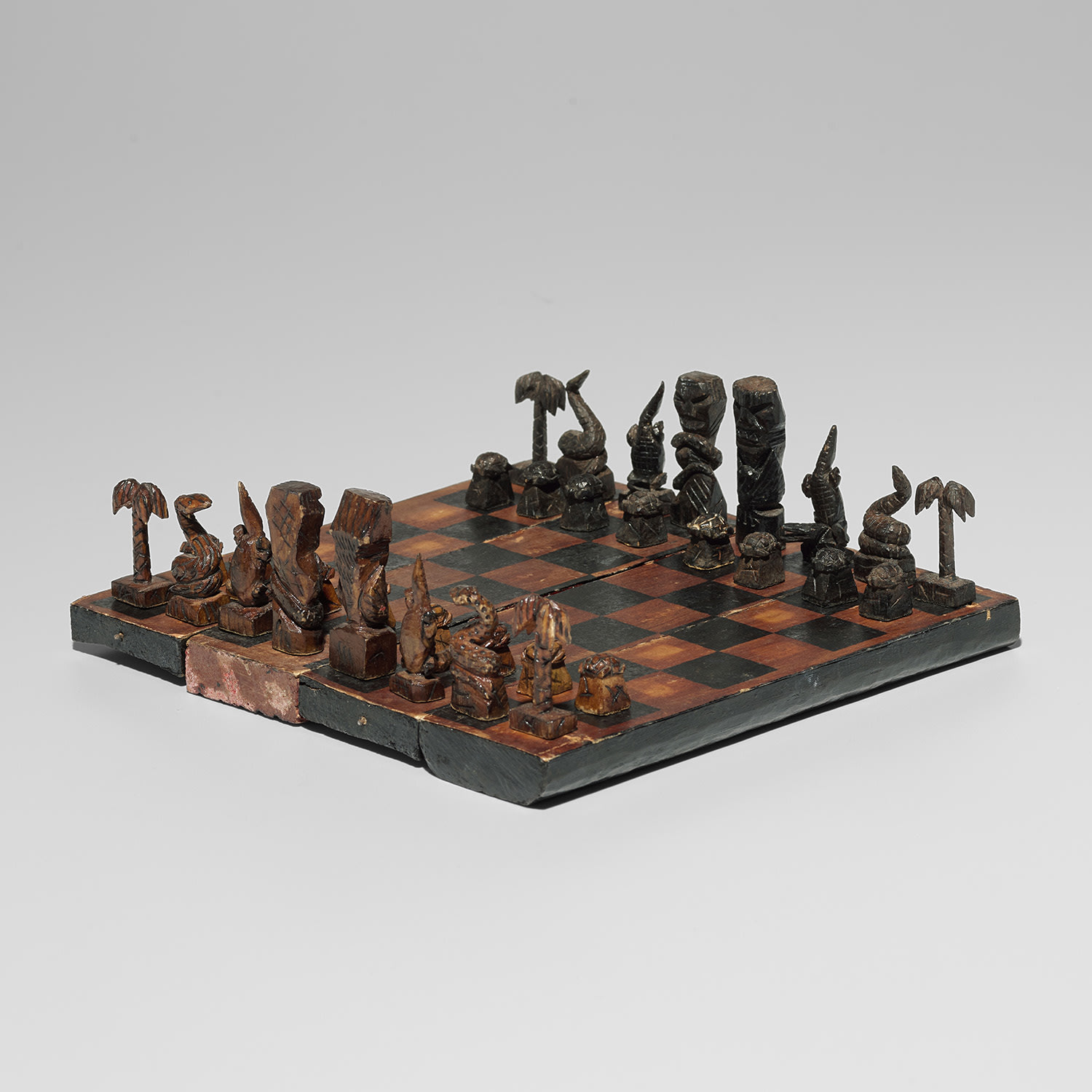





156
艾貝托.布里
《無題(國際象棋)》
油漆 卡片 裱於木 木 金屬別針(共36組)
最小組:1.8 x 1.4 x 1.4 公分 (0 3/4 x 0 1/2 x 0 1/2 英吋)
最大組:6.3 x 2 x 1.6 公分 (2 1/2 x 0 3/4 x 0 5/8 英吋)
棋盤:2 x 24.3 x 24.8 公分 (0 3/4 x 9 5/8 x 9 3/4 英吋)
整體:8.3 x 24.3 x 24.8 公分 (3 1/4 x 9 5/8 x 9 3/4 英吋)
最大組:6.3 x 2 x 1.6 公分 (2 1/2 x 0 3/4 x 0 5/8 英吋)
棋盤:2 x 24.3 x 24.8 公分 (0 3/4 x 9 5/8 x 9 3/4 英吋)
整體:8.3 x 24.3 x 24.8 公分 (3 1/4 x 9 5/8 x 9 3/4 英吋)
1943-45年作